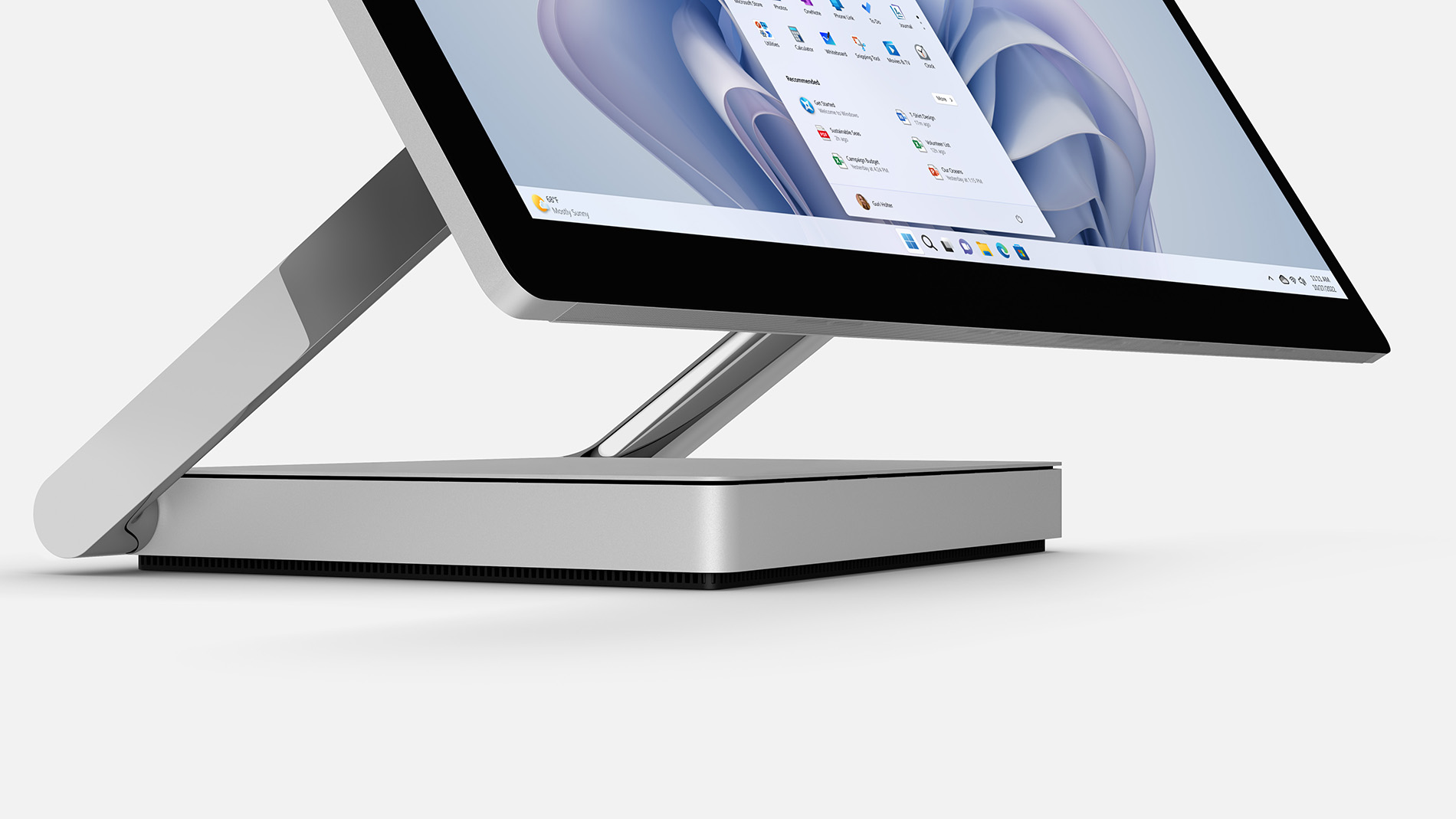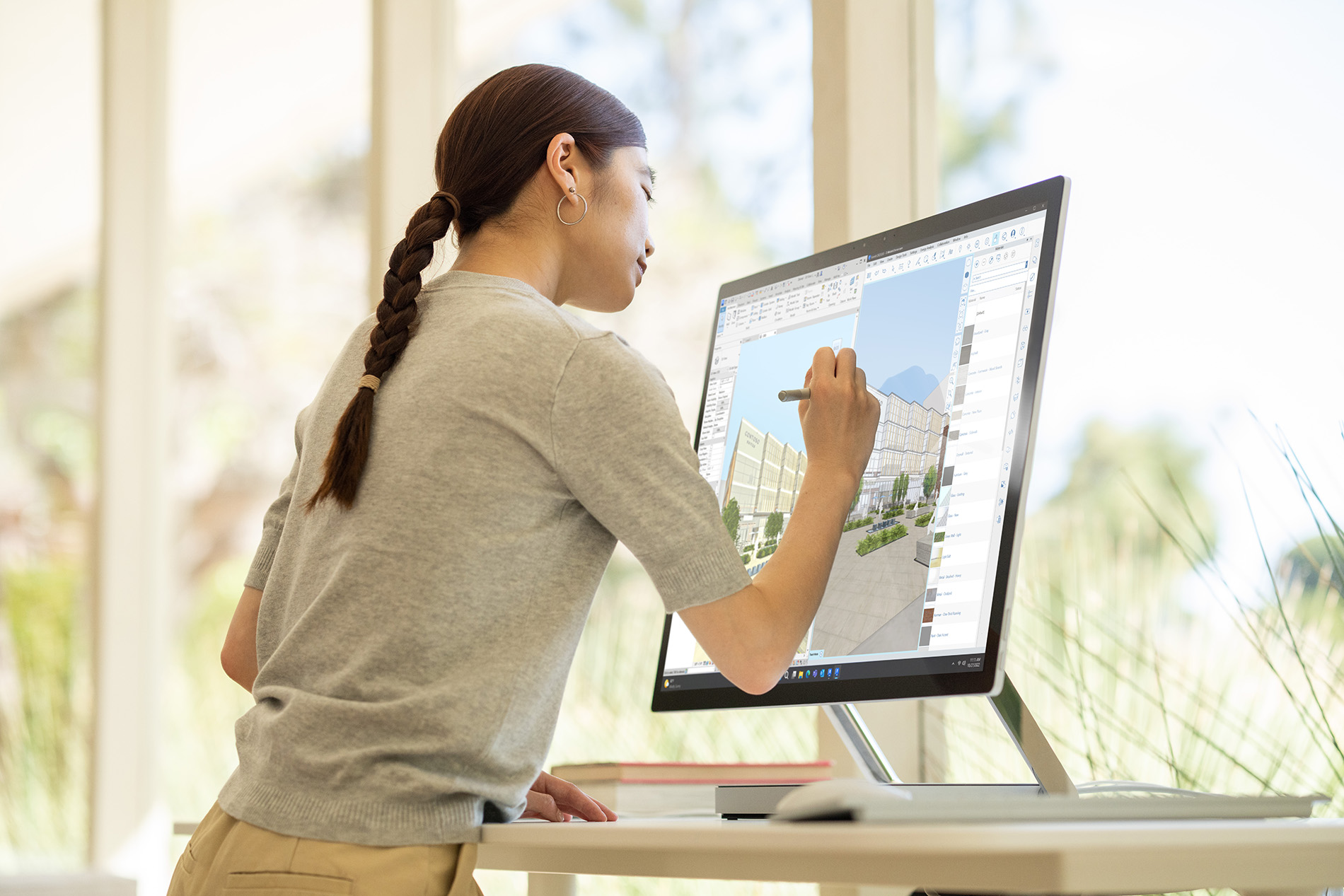Microsoft Surface Studio 2+ brings RTX 3060 power, but just an 11th Gen Intel CPU?
The Microsoft Surface Studio 2+ could be all style and no substance

The Microsoft Surface Studio 2+ has just been announced — packing what the company calls a “stand-out design” and “fluid productivity.” We agree with one of those points. Can you guess which one?
Introduced during the Surface October event alongside the Surface Pro 9 and Surface Laptop 5, the 2+ is certainly a marvel in product design. But looking good can only get you so far and I have some concerns about what you’re actually getting for the eye-watering price tag.
Unlimited power
So, what’s new in the Surface Studio 2+? It’s certainly an iterative update, rather than a ground up rebuild (hence the +). You’re still getting that same striking design, marked by that gorgeous 28-inch PixelSense touchscreen display (4500 x 3000-pixel resolution) — attached to that innovative gravity hinge that allows for effortless, weightless lowering and raising of the panel.
The three big changes here come on upgrades to the internals: Thunderbolt 4 ports, an RTX 3060 Laptop GPU and an 11th Gen Intel Core H-35 processor. Now, if you are looking at the latter two of those updates with a hint of trepidation, that’s the right reaction.
With Surface Pro 9 and Surface Laptop 5 offering 12th Gen Intel CPUs, why hasn’t the Surface Studio 2+ been given the same privilege? And on the topic of internals, why are we still mucking about with laptop-grade components?
Don’t get me wrong, this kind of power is going to be more than enough for some levels of prosumer work. But opting for an 11th Gen Intel H-series CPU and the RTX 3060 Laptop GPU does hamper its potential — especially when you think this is all connected to such a high-resolution display.
Other changes coming to the Surface Studio 2+ are an enhanced 1080p webcam and dual far field Studio Mics, the implementation of Dolby Vision and Dolby Atmos for improved sound and vision, and improved repairability with the option to replace parts.
Sign up to receive The Snapshot, a free special dispatch from Laptop Mag, in your inbox.
Outlook
Outside of the stunning attention to detail in its form factor and aesthetic, we’re a little concerned about who exactly would be the audience for the Surface Studio 2+. It’s too expensive for casuals and prosumer hobbyists, but not powerful enough for getting more intensive work done without some slowdown.
Microsoft really needs to think about this conundrum for the Surface Studio 3, and maybe make that box on the bottom a little bigger for some desktop-class internals. Because really, at the moment, it’s all style and no substance.

Jason brought a decade of tech and gaming journalism experience to his role as a writer at Laptop Mag, and he is now the Managing Editor of Computing at Tom's Guide. He takes a particular interest in writing articles and creating videos about laptops, headphones and games. He has previously written for Kotaku, Stuff and BBC Science Focus. In his spare time, you'll find Jason looking for good dogs to pet or thinking about eating pizza if he isn't already.



